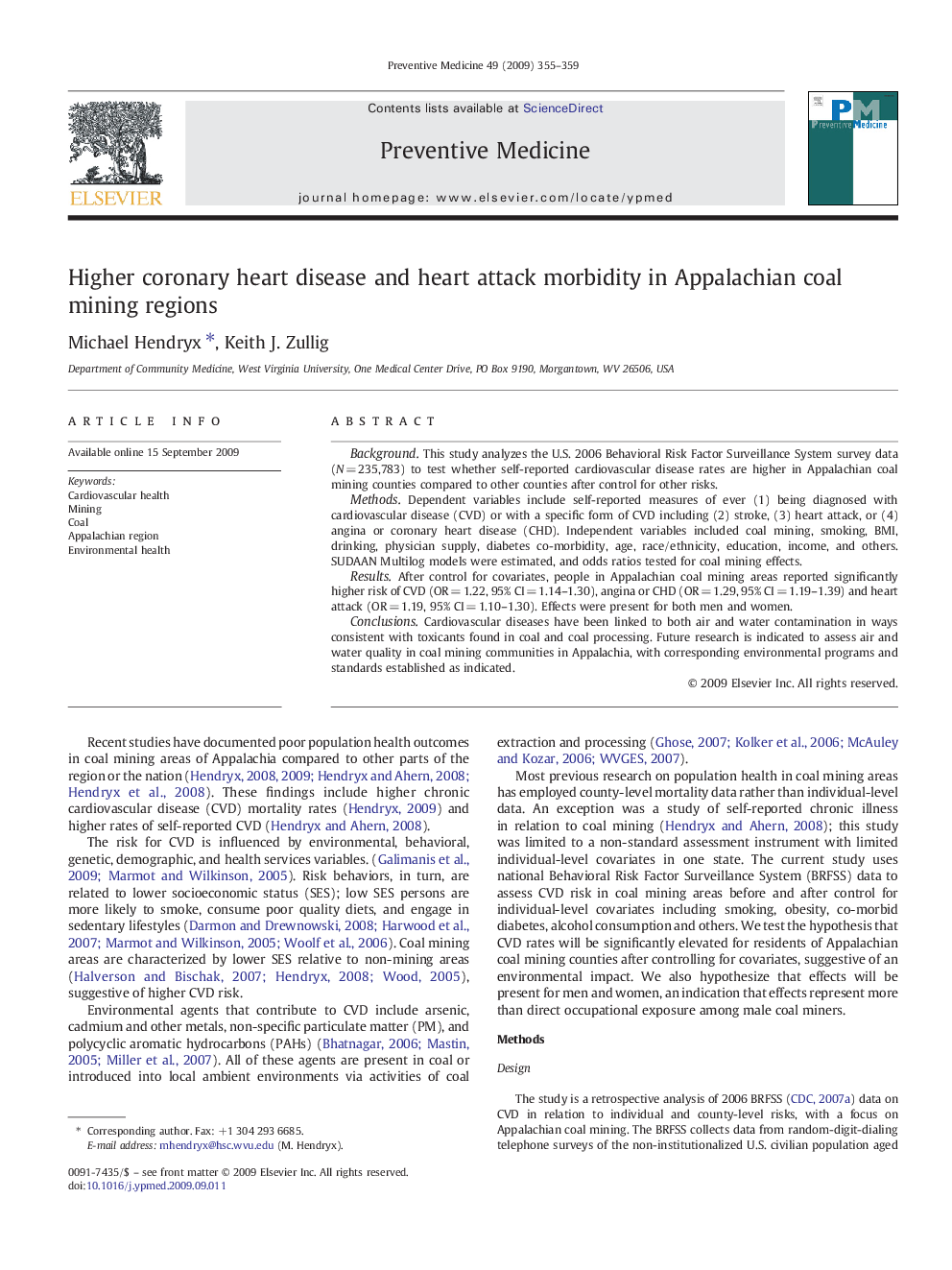| Article ID | Journal | Published Year | Pages | File Type |
|---|---|---|---|---|
| 3101132 | Preventive Medicine | 2009 | 5 Pages |
BackgroundThis study analyzes the U.S. 2006 Behavioral Risk Factor Surveillance System survey data (N = 235,783) to test whether self-reported cardiovascular disease rates are higher in Appalachian coal mining counties compared to other counties after control for other risks.MethodsDependent variables include self-reported measures of ever (1) being diagnosed with cardiovascular disease (CVD) or with a specific form of CVD including (2) stroke, (3) heart attack, or (4) angina or coronary heart disease (CHD). Independent variables included coal mining, smoking, BMI, drinking, physician supply, diabetes co-morbidity, age, race/ethnicity, education, income, and others. SUDAAN Multilog models were estimated, and odds ratios tested for coal mining effects.ResultsAfter control for covariates, people in Appalachian coal mining areas reported significantly higher risk of CVD (OR = 1.22, 95% CI = 1.14–1.30), angina or CHD (OR = 1.29, 95% CI = 1.19–1.39) and heart attack (OR = 1.19, 95% CI = 1.10–1.30). Effects were present for both men and women.ConclusionsCardiovascular diseases have been linked to both air and water contamination in ways consistent with toxicants found in coal and coal processing. Future research is indicated to assess air and water quality in coal mining communities in Appalachia, with corresponding environmental programs and standards established as indicated.
